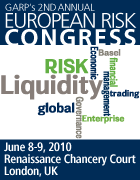“Energies” is a generic term I use to indicate financially traded instruments in the energy sector (and all the risk management that’s entailed). Of course, there are many similarities across money and energy markets. Credit and counterparty risk, for example, is a real concern for those in both arenas. Likewise, uncertainties in the political (read: regulatory) realm are shared by actors in both traditional and energy markets—regulators even often cross-over these fields (think CFTC, SEC, for example).
There are probably as many differences as there are similarities between money and energy markets. This post quickly highlights some of the diversity between the two.* (For those who are inspired to learn more, and for the daring, I suggest you examine the ERP section of the GARP website and consider joining the vanguard of those with the mark of specialization in this exciting field.) In this post I seek only to introduce the topic of traditional vs. energy market differentials. Subsequent posts will very quickly examine some of the elements in (somewhat) greater detail.
But for now…
The Fundamentals
Those dealing with energy instruments quickly come to understand that the value of their holdings is affected by more than what happens in OTC markets, on the floors of the NYSE, or by interest rates. Weather, political happenings, wear and tear, and human error can wreak havoc on the value of energies. When a hurricane whips through the Gulf of Mexico, for example, refineries along the coast and oil drilling platforms shut down until the storm passes, causing a back-up in delivery and processing of crude products, which in turn affects pricing down the line. A quick shutdown is easy to deal with though; imagine the hair-pulling that happens when a platform is knocked off its pilings or a refinery gets smacked with a tidal wave—physical damage can take weeks or months to repair, causing even further disruptions in projected prices and values.
All kinds of things happening on the ground—out there in the “real” world—can upset the value of an energy holding. A pipeline shuts down in Alaska because corrosion demands repair. Or, a pipeline in Colombia is bombed by disgruntled rebels. Oil tankers run aground or get hijacked by pirates. Refineries explode. Wells come up dry. Residents fight new exploration and production (the NIMBY—not in my backyard—factor). Earthquakes shut down mines (see: Chile). Oil and natural gas companies are nationalized (see: Latin America). Wars break out. Shipbuilding is delayed, highway infrastructure gets clogged, storage tanks leak, blackouts occur, power lines go down, the wind dies, and on and on.
You get the picture. A trader holding an energy instrument needs to be aware of not just what is happening on the trading floor, but also of what’s happening in the entire upstream-to-downstream train. To do otherwise is poor risk management and invites negative returns on value.
Price Drivers
Compared to money markets, the number of and complexity of price drivers for energies are dazzling. Pilopovic (see citation below) does a remarkable job of laying these out as an introduction to the complexity of energies. Here I replicate her table in order to give a bird’s eye view of the difference between the two markets. I recommend picking up Pilopovic's book (much of which is used for the ERP exam) to get better acquainted with the subject.
| Issue | In Money Markets | In Energy Markets |
| Maturity of market | Several decades | Relatively new |
| Fundamental price drives | Few, simple | Many, complex |
| Impact of economic cycles | High | Low |
| Frequency of events | Low | High |
| Impact of storage/delivery; convenience yield | None | Significant |
| Correlation between shot- and long-term pricing | High | Lower, “split personality” |
| Seasonality | None | Key to natural gas and electricity |
| Regulation | Little | Varies from little to very high |
| Market activity (liquidity) | High | Lower |
| Market centralization | Centralized | Decentralized |
| Complexity of derivative contracts | Majority of contracts are relatively simple | Majority of contracts are relatively complex |
As Pilopovic notes, "Energies respond to the dynamic interplay between producing and using, transferring and storing, buying and selling, and ultimately 'burning' actual physical products." Remember that statement each time you make a move in the energy market - it should give pause to ensure the right trade / hedge / model / measurement ' move is being made.
A quick look at the actual physical environment energy commodities must navigate to make it to market, and a brief overview of the differences between money and energy markets (above) reveals the complexity of energies, and why the variations are worth further examination. I hope to tackle many of these elements in future entries. In the next post I will take a quick look at the impact of storage and convenience yield on energies. Stay tuned...
*Many of the concepts in this post were inspired by: Dragana Pilopovic. Energy Risk: Valuing and Managing Energy Derivatives (McGraw Hill, 2007).






3 comments:
It's also worth noting that power (electricity) can't be stored on a large, commercial scale, at least currently, hence it has to be traded in "real time".
Wow. VERY interesting material here. Thanks for the introduction to the energies sector. I look forward to the series
In 1996, I had the honor of invitation to watch Dragana Pilipovic (correct spelling) walk through (on a white board!) a two-factor, mean reverting model and the construction of electricity forward price curves. Amazing experience for a young guy just entering the power trading biz!
Post a Comment